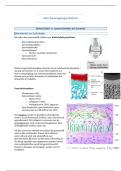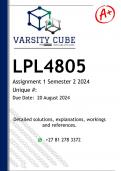Samenvatting
Summary articles for Data Mining for Business and Governance (880022-M-6)
This document summarizes all 14 articles for the Midterm Exam of the course Data Mining for Business and Governance (-M-6) in the Master Data Science and Society at Tilburg University. The document answers the questions from the syllabus regarding the articles.
[Meer zien]













